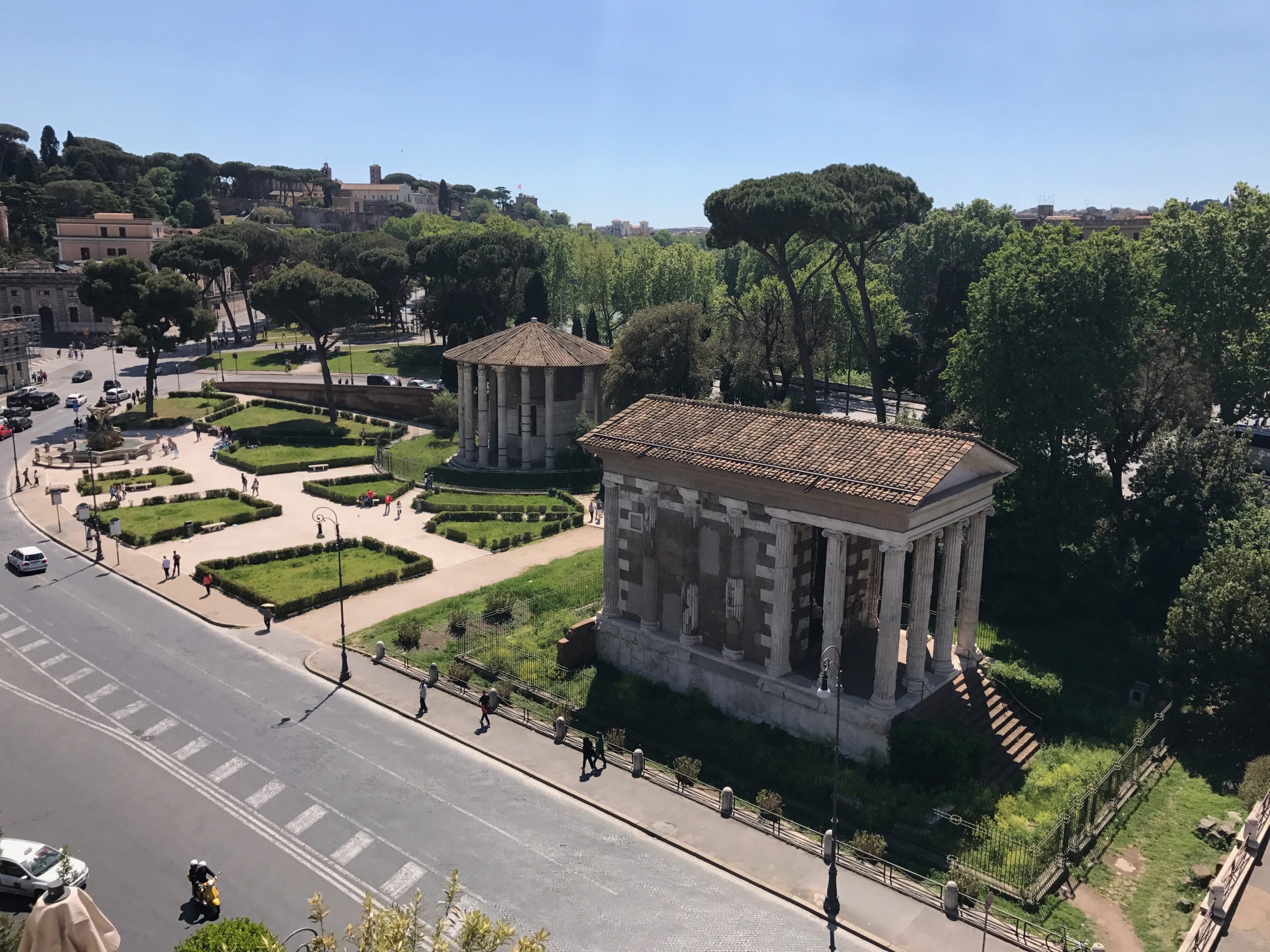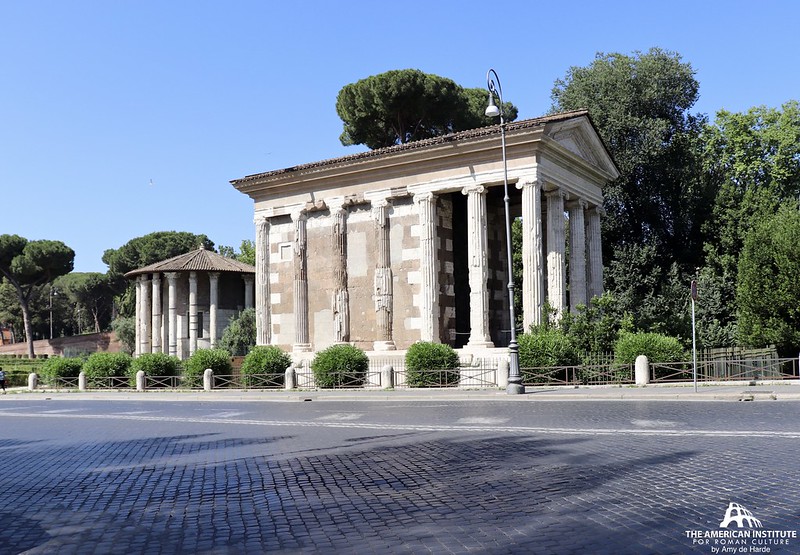Start with our video overviews:
This is the cattle market of Rome, attributed by the Romans to Hercules’ own presence here while on his labor to bring cattle from Spain to Greece (Propertius, Elegies 4.91-20). The first gladiatorial games were documented here in 264 BC (Val. Max. 2.4.7), and the first mention of a Roman insula in the city was located here by Livy (21.62, 218 BC). Excavations have revealed a number of temples and shrines. What remains visible in this area, defined by the Circus Maximus, Velabrum, Capitoline, and Tiber River, are the following:
- Temple of Hercules (Olivarius or Victor)
- Temple of Portunus
- Arch of Janus (late Antique)
- Arch of the Argentarii (Severan)
- Altar of Concordia Augusta
- Structure under S. Maria in Cosmedin (Ara Maxima?)
Forum Boarium: (Bovarium, Reference Latin Library: Cic. pro Scaur. 23; Liv. passim; ἀγορὰ καλουμένη or λεγομένη Βοαρία Dionys. βοῶν ἀγορά Plut. cit.) was, as its name implies, the cattle-market of ancient Rome. It originally extended from the boundary of the Velabrum (later marked by the arcus Septimii Severei and the Janus Quadrifronis to the Tiber, and from the valley of the circus Maximus to the road leading from the pons Sublicius (or pons Aemilius) towards the Velabrum, but not as far north as the Servian wall (Reference Latin: Ov. Fast. VI.477, 478; Varro, LL V.146; id. ap. Propert. IV.9.17; Liv. X.23.3; XXI.62.3; XXII.57.6; XXIV.10.7; XXVII.37.15; XXIX.37.2; XXXIII.27.4; XXXV.40.8; Plin. NH xxxiv. (cf. Oros. IV.13.3; Cass. Dio, fr. 47); Fest. 30; Aethicus p83, Riese; CIL VI.1035). The first gladiatorial games were held here. See Arcus Septimii Severi (in foro Boario).
In process of time this large open space was greatly encroached upon by buildings; but the name was still applied to the whole district. A bronze statue of a bull (said to have been brought from Aegina) symbolised its purpose, and (according to some authorities) gave it its name. It was an important centre of traffic, and had been so from a remote period; for the original route from the north and east came along the Vicus lugarius or the Vicus Tuscus (q.v.) p224 on its way to the crossing of the Tiber at the pons Sublicius (or later the pons Aemilius), and here intersected the road which ran from the campus Martius between the Capitol and the river, passing through the porta Carmentalis and the porta Flumentana, and on to the porta Trigeminia. The road along the valley of the circus Maximus and the cilvus Publicius descending from the Aventine also opened into this narrow level space between the hills and the river. Thus streets, in later days adorned with porticoes, radiated from the forum Boarium in all directions (DAP 2.vi.247‑248).
This crowded area was often devastated by fire. It seems to have lain for the most part within the eleventh region of Augustus, but to have also included a small portion of the eighth.
Two terminal stones (CIL VI.919, 31574), one of the period of Tiberius, the other of Claudius, show that the open space, which was public property, required protection from encroachment, and define the eastern boundary as running along the front of the Templum Herculis Pompeiani (q.v.), which stood in front of the carceres of the circus Maximus.
Of the temples situated in or near the forum Boarium the round temple of Hercules Invictus (q.v.) with the ara Maxima close by it, was the most famous; there were also those of Fortuna, Hercules Pompeianus, Mater Matuta, Pudicita Patricia (qq.v.).
Among other monuments were the two fornices erected by L. Stertinius (q.v.) . The Busta Gallica and Doliola (q.v.) were probably primitive tombs, discovered (and misunderstood) in Roman times. See Jord. I.1.238, 412; 2.474‑487; LR 515‑516; DAP 2.vi.231‑275; HJ 143; Pl. 395‑403.
This content is brought to you by The American Institute for Roman Culture, a 501(C)3 US Non-Profit Organization.
Please support our mission to aid learning and understanding of ancient Rome through free-to-access content by donating today.
The Oxford Handbook of Engineering and Technology in the Classical World (Oxford Handbooks) 1st Edition
by John Peter Oleson (Author)
Cite This Page
Cite this page as: Darius Arya, The American Institute for Roman Culture, “Forum Boarium” Ancient Rome Live. Last modified 05/26/2020. https://ancientromelive.org/forum-boarium/
License
Created by The American Institute of Roman Culture, published on 10/24/2019 under the following license: Creative Commons: Attribution-NonCommercial-ShareAlike. This license lets others remix, tweak, and build upon this content non-commercially, as long as they credit the author and license their new creations under the identical terms. Please note that content linked from this page may have different licensing terms.





